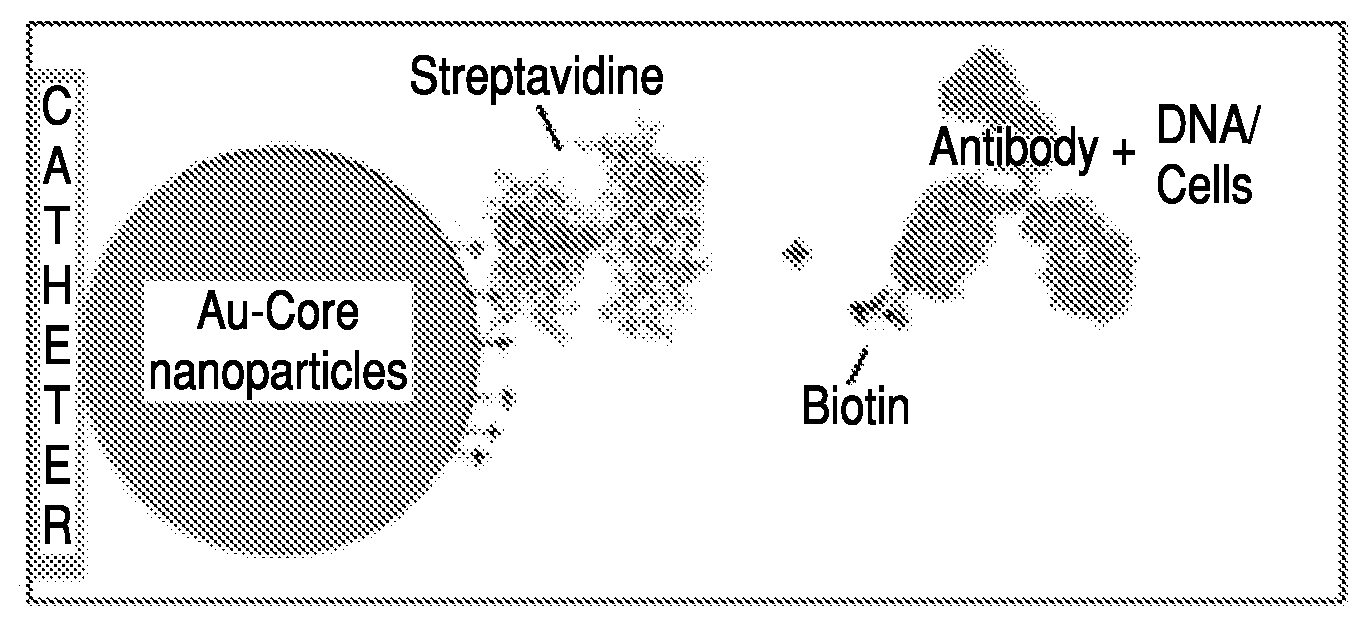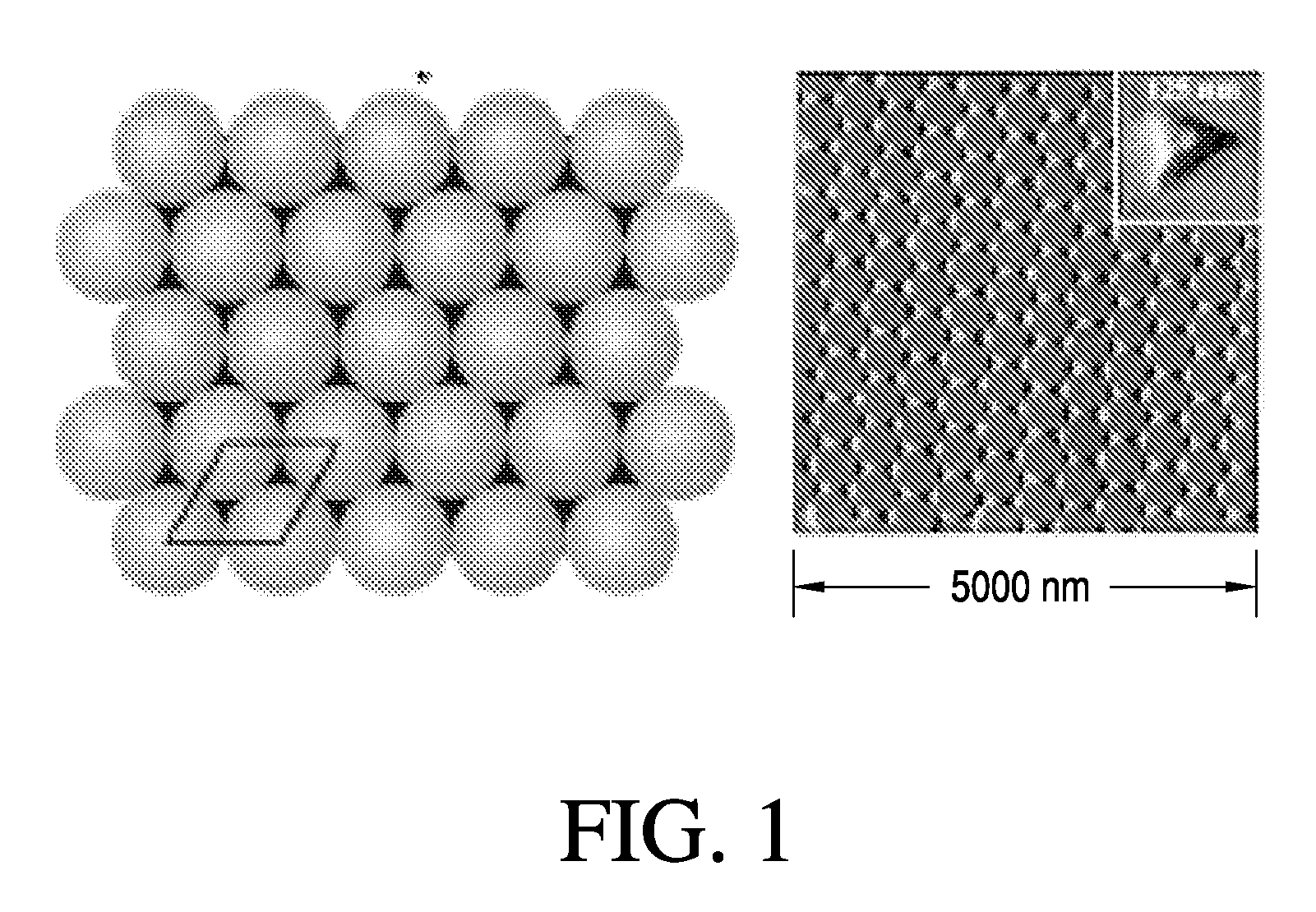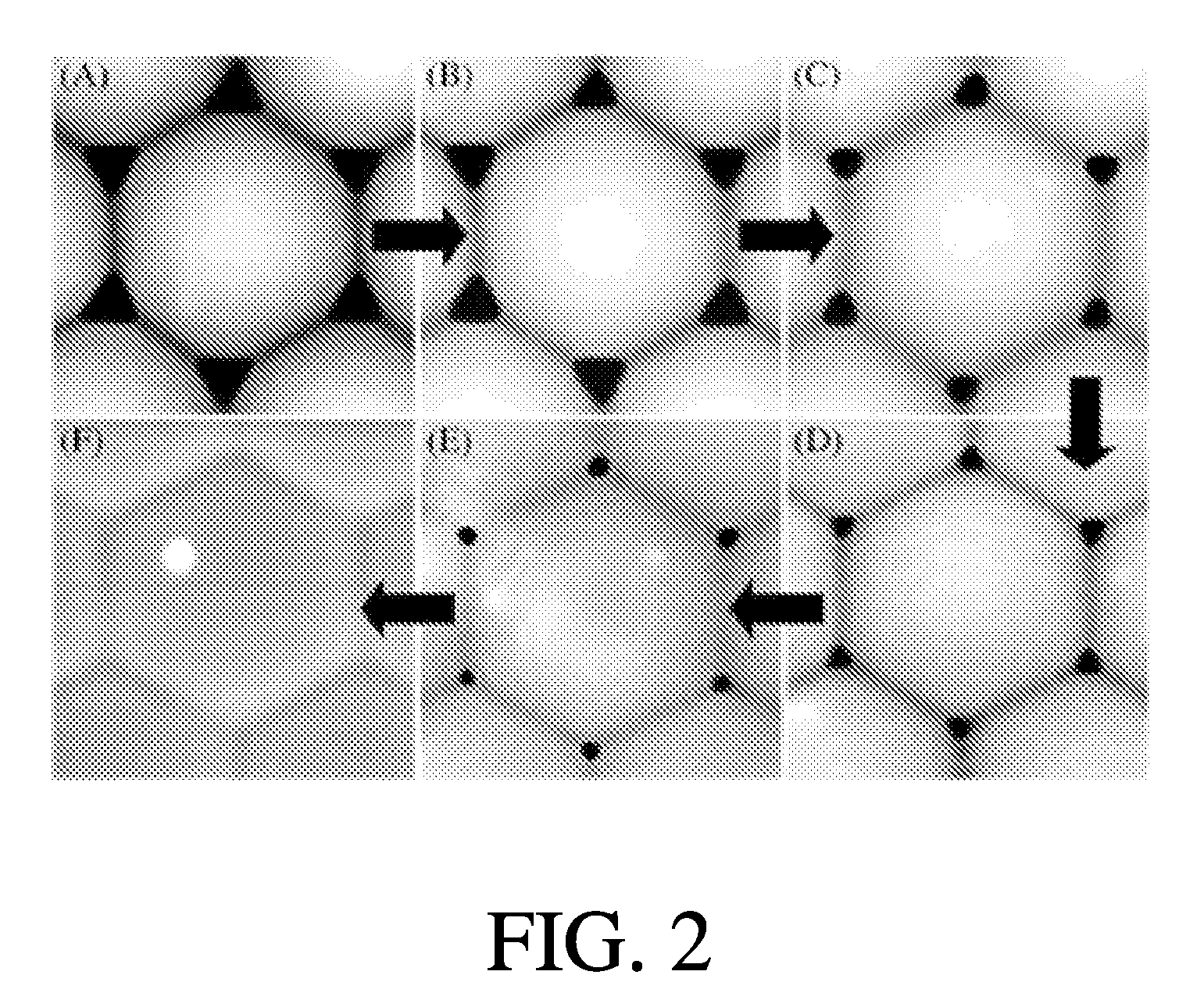Diagnostic-nanosensor and its use in medicine
a biosensor and diagnostic technology, applied in nanotechnology, material testing goods, photographic processes, etc., can solve the problems of limiting the production of metal nanoparticles, unable to precisely control the size and shape of particles, and the mentioned documents are produced via wet chemical synthesis, etc., to achieve unprecedented sensitivity, improve electrical conductivity, and increase the effect of signal transduction of binding events
- Summary
- Abstract
- Description
- Claims
- Application Information
AI Technical Summary
Benefits of technology
Problems solved by technology
Method used
Image
Examples
example 1
[0086]The two-dimensional ordering of latex particles as a basis for nanosphere lithography (NSL) has been used by us and others in the past ([1] to [8]). The evaporation or sputtering of different materials through a latex particle mask enabled the production of lattices of triangular islands on various substrates, the shape of the islands being determined by the shape of the aperture between the spheres in the mask. Clearly, the size of the aperture between the spheres depends on the size of the beads in the monolayer. To overcome this limitation, we annealed the monolayer to downsize the apertures in the mask from an initial 200 nm to 30 nm. This result was far beyond our expectations, and was essential for the fabrication of nanodot particles (FIG. 6) and isolated nanorings (FIG. 7).
[0087]In our recent work we demonstrated that if the sample is moving during the deposition process, the evaporated structures can become much more complex and range from cuplike structures to rods a...
example 2
[0094]We used the following strategy to specifically bind monoclonal IgG to Au nanoislands that were assembled on transparent or non-transparent substrates.
[0095]A 20 mM solution of succinimidyl 6-[3′-(2-pyridyldithio)-propionamido] hexanoate, (a SPDP reagent) in DMSO (dimethylsulfoxide) or ethanol was incubated with our periodic arrays of nanostructures in the presence of 150 mM DTT (dithiothreitol) for 30 minutes. This procedure allows covalent linkage of thiol to Au nanoislands. After cleaning the arrays with buffer (PBS-EDTA) bioorganic interactive material at concentrations from 0.5 to 2 mg / ml was incubated with the array for 1 h or over night. We revealed coatings as shown in FIG. 8 for the case that monoclonal IgG at a concentration of 1 mg / ml was used. The dimension of a single dot spot on gold is 12 nm, corresponding to the average molecular weight of a single IgG molecule of 150 kD.
[0096]N-succinimidyl 3-(2-pyridyldithio) propionate (SPDP reagents) are a unique group of am...
PUM
 Login to View More
Login to View More Abstract
Description
Claims
Application Information
 Login to View More
Login to View More - R&D
- Intellectual Property
- Life Sciences
- Materials
- Tech Scout
- Unparalleled Data Quality
- Higher Quality Content
- 60% Fewer Hallucinations
Browse by: Latest US Patents, China's latest patents, Technical Efficacy Thesaurus, Application Domain, Technology Topic, Popular Technical Reports.
© 2025 PatSnap. All rights reserved.Legal|Privacy policy|Modern Slavery Act Transparency Statement|Sitemap|About US| Contact US: help@patsnap.com



